|
12/26/2021 2 Comments Stop Giving Weekly Spelling Tests!“Written language is invented; it is code based. To become literate, students must become masters of the code.” Did you know that learning to read is dependent upon our oral language skills? Really, it is! Research has proven this. And learning to encode (spell) is also dependent upon our oral language skills. Spelling practice is critical for developing orthographic recall. Research has discovered that our memory for words is connected to language processing and based upon 4 interrelated aspects of word knowledge. 1-phonological form, or phonemic makeup, meaning its pronunciation, 2-orthographic form or spelling, 3-semantics or word meaning, and morpho-syntax, 4- a word’s morphological structure and grammatical role (Adlof & Perfetti, 2014; Treiman, 2017). Reading words is easier than spelling them. Spelling practice is critical for developing orthographic recall. Reading words is easier than spelling them, though. This is because words in print can be recognized, even on the basis of a partial word memory. Spelling, on the other hand, requires a complete and accurate word memory. Oftentimes, spelling requires a more precise orthographic sequence than reading. However, the teaching of spelling supports reading development. Learning to spell occurs in phases: 1-Pre-Alphabetic ex. kkeedb 2-Early Alphabetic ex. b 3-Later Alphabetic ex. boe 4-Consolidated ex. Boy As a student progresses through the stages of spelling development, teachers can design instruction based upon a student’s needs. An understanding of this development enables teachers to teach students at their own individualized instructional level. But before we get into what that instruction should look like, we need to know how to identify what stage of development a student is at. Sooooo…. How do we know how well a student can spell? And how do we know what grade level a student’s spelling skills are at? How do we know how well a student can spell? And how do we know what grade level a student’s spelling skills are at? Spelling inventories assess students’ ability to write letters to represent the sounds they hear. Many of these inventories align to the stages of spelling development and can be used to design instruction and for progress monitoring. Suggested Universal Screeners of Spelling: - Words Their Way Spelling Inventories: Primary, Elementary, and Upper Elementary Spelling Inventories) - DSI Diagnostic Spelling Assessment - WIST subtest of spelling Remember how back in the day, we used those things called spelling lists? I would get my list of 10 words on Monday, never look at them again until Thursday night when I would quickly memorize them for Friday’s test, on which I would always get a 100 percent on. My experience is probably not different from many others; although, some may not have been able to memorize those words and not scored as well as I did. The problem with this is that we would then label this student as a bad speller, tell their families to study the words every night with them, or we would refer them for Special Education eligibility. And also remember back in the day, we would ask a student to use their knowledge of phonics to decode a word? This meant that the learner had to memorize the sound or sounds for all letters and letter combinations in order to decode an unfamiliar word. It also meant that when it came time to write these words, we would advise students to spell a word by sounding it out. Spelling lists do not teach our students how to spell because they do not provide them with an understanding of why words are spelled in the ways that they are. And the problem with telling a student to “sound it out” is that this strategy only works on a limited number of multi-syllable words. There are still a ton of words that are not amenable to this strategy. Spelling lists do not teach our students how to spell because they do not provide them with an understanding of why words are spelled in the ways that they are. Instead, we should be giving our students multiple, meaningful exposures to words and explicitly teach them spelling patterns and the “rules” of the English language. We need a better way to instruct students on learning to spell that will assist their automaticity of spelling pattern recall than spelling lists! Not only are there layers to our language, but there are also rules. Students are taught the rules of the English language through aligned instruction in decoding and encoding. The instruction of phonics skills needs to be directly taught. If not, students can make inferences, and we know that skilled guessing is not skilled reading. When students are taught word-based strategies, they will outperform readers who were taught text-based strategies on all reading measures. However, when poor readers become proficient in the code of the English language, they can begin to build a sight vocabulary (remember - this is a pool of words that a student can instantly and effortlessly recognize [Kilpatrick, 2015]). We spell words through our phonological filter. To spell, we use our mouths and our ears. This is because we spell words by how they sound and are pronounced. Initially, while learning to spell, students may trial what we call inventive spelling. This is when a student spells a word that has not been stored in their memory phonetically. Inventive spelling can support phonemic awareness learning and skills. However, we should give our students corrective feedback at a point to help establish this long-term memory. Added Bonus for Learning to Spell: The spelling process is responsible for word recognition. Readers build spelling patterns. The memory developed for spelling functions on 2 broad levels: orthographic recall and orthographic recognition. Orthographic recognition is the essence of word recognition. This is because orthographic recognition occurs when a reader recognizes familiar orthographic sequences in words. To spell these words, orthographic recall is required. Orthographic recall necessitates a more intricate, well-encoded memory of orthographic sequences. So spelling practice is critical to developing orthographic recall. (Click HERE to read more about orthographic mapping!) Therefore, spelling instruction has been shown to improve reading skills. When we are deliberate in our instruction and explicit in making the connections between sounds and corresponding print of the sounds, students are able to make that much more progress. Best practice suggests this scope and sequence for teaching spelling! And do you know why it works? Because this sequence aligns with what we know about orthographic mapping. So really, I am not teaching you anything new at this point. This should be old news to you already! Especially if you already ready my blog on orthographic mapping. But if you haven’t, click HERE and get to learning! Now, I know what you are thinking - so now how am I teaching spelling if I am not doing tests? Am I just presenting a word to my students, mapping it a few times, and then, students are good to go? And if I am individualizing instruction based upon their spelling inventories, how am I finding time to map all of these words with all of my students? Well, first take a deep breath. Most students will fall within the same developmental stages of spelling. Therefore, whole group instruction can be focused on the developmental stage that the majority of students fall in. There will be a few outliers, ofcourse, and those students should receive both whole group instruction and small group instruction that targets their lagging skills. Targeted instruction will propel a student’s development. But that does not answer all of your questions, does it? So my next solution, or strategy, is word study. Word study is a cohesive instructional approach that teaches word recognition, vocabulary, phonics, and spelling. Word study provides students with opportunities to investigate and understand the patterns in words. Knowledge of these patterns means that students are able to learn the spelling of multiple words at one time, not memorize 10 words for a test of memory each week! Here is one way you could teach Word Study in your classroom! Let me give you an example so you can see it in action: 1-Introduce the spelling pattern by choosing words for students to sort. -The teacher gives the students 20 words to sort (10 of them contain the hard /c/ sound and 10 contain the soft /c/ sound. 2-Encourage students to discover the pattern in their reading and writing. -Once they are done with their sort, ask students to analyze the words, looking for a rule. -Other activities may include comparing and contrasting word features, collecting words from text, etc. that fit the pattern and/or rule, or playing games or completing activities to apply their word knowledge. -Teachers may construct a word wall illustrating examples of the different patterns studied. -Students may keep a word study notebook to record the known patterns and their new understandings about words. 3-Use reinforcement activities to help students relate this pattern to previously acquired word knowledge. -Ask students to find words on the word wall or in their word study notebooks that mirror these patterns. To implement Word Study effectively, we must teach our students to become word detectives. Students begin to make sense of word patterns and their relationships to one another. Spelling "rules" are not dictated by the teacher for students to memorize, but rather, spelling patterns and generalizations are discovered - and then learned - by students. When students engage and make meaning of the content, they learn! By using such a sequence of instruction, students learn that spelling patterns exist and that these patterns help to explain how to spell, read, and write words. Exceptions to the “rules” can also be taught using this instruction. Click HERE to check out other ways that I connect vocabulary instruction to Word Study! And I know what the final question is going to be - how do we grade our students on their spelling knowledge? So first, we can use our spelling inventories to progress monitor. This allows us to measure our students’ progress over time. Additionally, teachers can test students' pattern knowledge rather than their ability to memorize single words using word study as well. Maybe 20 words are on our word study list, and I assess 10 of them with a “spelling test” on Friday. This gives me a weekly way to progress monitor my students as well! Click HERE to grab some free Reading progress monitoring assessments! Remember - awareness of the internal structures of words along with spelling practice has been seen by researchers to translate into stronger reading ability. So let’s study those words so we can learn to spell and read! Happy & Healthy Teaching! PEACE, Miss Rae References: Adlof, Suzanne & Perfetti, Charles. (2013). Individual differences in word learning and reading ability. Kilpatrick, D.A. (2015). Essentials of Assessing, Preventing, and Overcoming Reading Difficulties. Lyon, G. R. (1998). Why reading is not a natural process. Educational Leadership, 55(6), 14–18. Treiman, R. (2017). Learning to spell words: Findings, theories, and issues. Scientific Studies of Reading, 21(4), 265–276. https://doi.org/10.1080/10888438.2017.1296449 Related CoursesRelated BlogsRelated Resources
2 Comments
MK Thompson
1/17/2022 01:18:52 pm
Great article! I am going to show it to other teachers in my building that I am trying to move to Structured Literacy.
Reply
Thank you! I am so happy to hear that your school sounds like it is making a shift to the Science of Reading research. I am also thrilled to hear that you are empowering your colleagues by sharing this blog! Your colleagues - and students - sounds so lucky to have you.
Reply
Leave a Reply. |
CategoriesAll Comprehension CoPlanning CoTeaching Directed Reading DIY Fluency Fountas & Pinnell Graphic Organizers Guided Reading Lesson Planning Multi-Tiered Systems Of Support Phonological Awareness RAN Read And Respond Reading Reading Assessments Reading Comprehension Response To Intervention RTI Science Of Reading Science Of Reading For Special Education Teachers Special Education Special Education Eligibility Special Education Lesson Planning Teaching Strategy Visualizing & Verbalizing Visual Texts Vocabulary Writing Writing In Response To Reading |




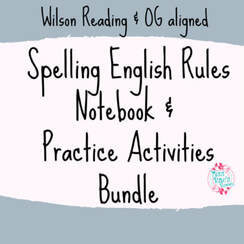
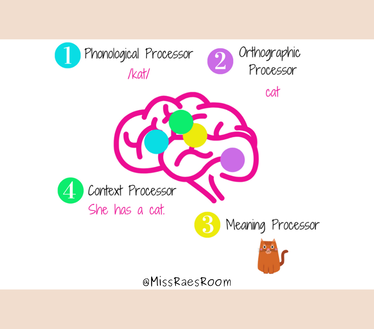



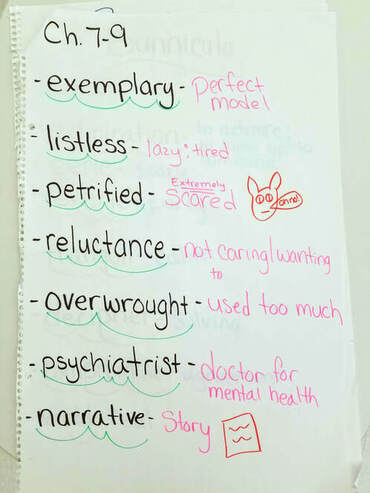



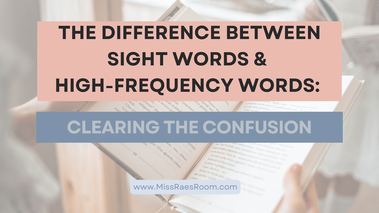




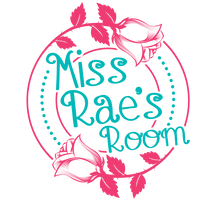
 RSS Feed
RSS Feed